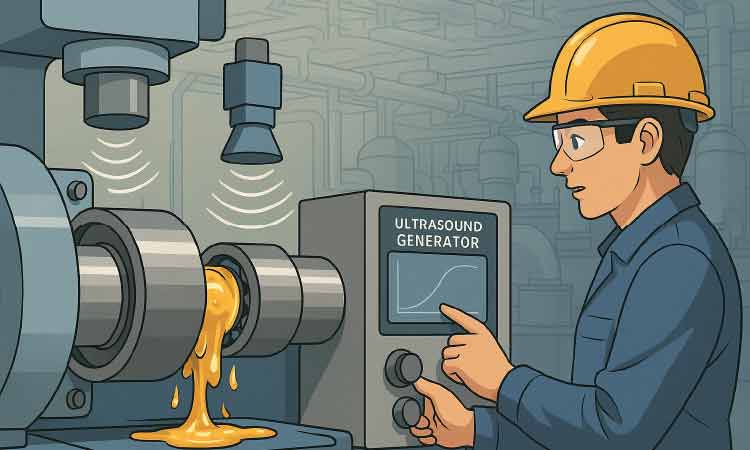Lubrication plays a crucial role in reducing friction, minimizing wear, and enhancing the efficiency of mechanical systems. Traditional lubrication methods, however, face challenges such as uneven lubricant distribution, increased energy consumption, and environmental concerns. A breakthrough innovation—ultrasound-assisted lubrication (UAL)—is transforming the field of tribology by leveraging ultrasonic vibrations to optimize lubricant behavior, leading to improved performance and longevity of machinery.
Understanding Ultrasound-Assisted Lubrication
UAL integrates high-frequency sound waves (typically above 20 kHz) into lubrication systems, inducing microscopic oscillations in the lubricant and the contact surfaces. These oscillations create a more uniform lubricant film, reduce surface adhesion, and enhance fluid penetration into contact zones.
The application of ultrasonic energy significantly alters the lubricant’s rheological properties, promoting better dispersion and
film thickness control.
The Process of Ultrasound-Assisted Lubrication
The UAL process involves the following key steps:
- Generation of Ultrasonic Waves: A transducer emits high-frequency vibrations that are transmitted into the lubricant.
- Modification of Lubricant Behavior: The ultrasound waves decrease viscosity fluctuations, improve flow characteristics, and prevent the formation of boundary friction zones.
- Lubricant Distribution Enhancement: The ultrasonic vibrations facilitate even lubricant dispersion, ensuring optimal coverage of moving surfaces.
- Reduced Wear and Friction: The improved lubricant film minimizes direct metal-to-metal contact, significantly reducing wear and friction coefficients.
Applications of Ultrasound-Assisted Lubrication
UAL finds applications in various industries where precise lubrication is critical:
Manufacturing & Metalworking
- Machining Operations: UAL improves cutting fluid efficiency, leading to better surface finish and tool life extension.
- Sheet Metal Forming: Enhanced lubrication reduces die wear and improves formability in deep drawing and stamping processes.
Automotive Industry
- Engine Components:
Ultrasound-assisted oil circulation enhances lubrication in engines, reducing energy losses and extending component life. - Transmission Systems:
UAL aids in reducing wear in high-stress transmission gears and bearings.
Biomedical Applications
- Artificial Joints & Prosthetics: Improved lubrication in joint implants reduces friction and enhances durability.
- Surgical Instruments: UAL helps in better lubrication and sterilization of precision medical tools.
Aerospace & Defense
- Aircraft Bearings & Gears: Enhanced lubrication reliability in extreme temperature and pressure conditions.
- Missile and Spacecraft Components: Reduction of friction in moving parts for improved operational efficiency.
Advantages of Ultrasound-Assisted Lubrication
- Reduced Friction & Wear: Extends the life of machine components by ensuring uniform lubrication.
- Energy Efficiency: Lowers power consumption by decreasing resistance in moving parts.
- Environmental Benefits: Reduces excess lubricant usage and waste, minimizing environmental impact.
- Enhanced Performance: Improves consistency and reliability in high-precision applications.
- Cost Savings: Reduces maintenance costs and downtime due to improved lubricant effectiveness.
Challenges and Future Prospects
Despite its numerous benefits, UAL faces challenges such as the need for specialized equipment, initial implementation costs, and compatibility with existing lubrication systems. Future advancements in smart ultrasonic control, real-time monitoring, and AI-driven optimization will further enhance the efficiency and adaptability of this technology.
Conclusion
Ultrasound-assisted lubrication is a groundbreaking innovation that holds immense potential for revolutionizing traditional lubrication techniques. By improving lubricant distribution, reducing friction, and increasing energy efficiency, UAL is paving the way for enhanced machine performance across multiple industries. As research and technological developments continue, UAL is expected to become a standard in precision lubrication, driving industrial progress while promoting sustainability.



